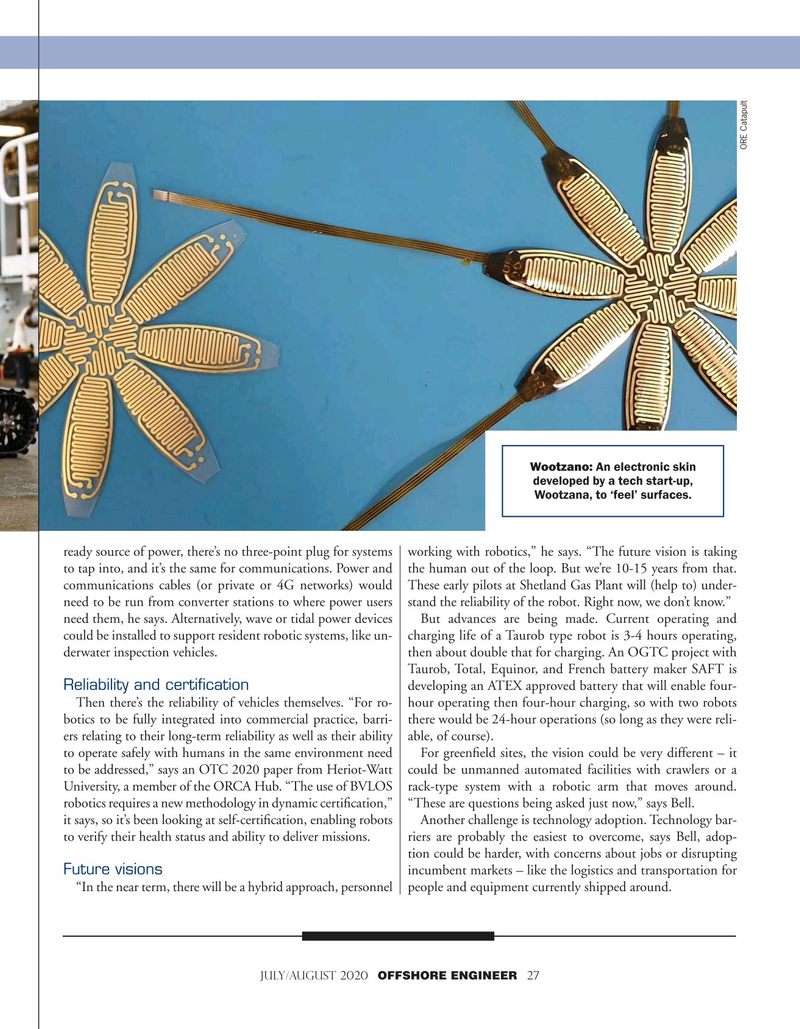
Page 27: of Offshore Engineer Magazine (Jul/Aug 2020)
Read this page in Pdf, Flash or Html5 edition of Jul/Aug 2020 Offshore Engineer Magazine
ORE Catapult
Wootzano: An electronic skin developed by a tech start-up,
Wootzana, to ‘feel’ surfaces. ready source of power, there’s no three-point plug for systems working with robotics,” he says. “The future vision is taking to tap into, and it’s the same for communications. Power and the human out of the loop. But we’re 10-15 years from that. communications cables (or private or 4G networks) would These early pilots at Shetland Gas Plant will (help to) under- need to be run from converter stations to where power users stand the reliability of the robot. Right now, we don’t know.” need them, he says. Alternatively, wave or tidal power devices But advances are being made. Current operating and could be installed to support resident robotic systems, like un- charging life of a Taurob type robot is 3-4 hours operating, derwater inspection vehicles. then about double that for charging. An OGTC project with
Taurob, Total, Equinor, and French battery maker SAFT is
Reliability and certification developing an ATEX approved battery that will enable four-
Then there’s the reliability of vehicles themselves. “For ro- hour operating then four-hour charging, so with two robots botics to be fully integrated into commercial practice, barri- there would be 24-hour operations (so long as they were reli- ers relating to their long-term reliability as well as their ability able, of course). to operate safely with humans in the same environment need For green?eld sites, the vision could be very different – it to be addressed,” says an OTC 2020 paper from Heriot-Watt could be unmanned automated facilities with crawlers or a
University, a member of the ORCA Hub. “The use of BVLOS rack-type system with a robotic arm that moves around. robotics requires a new methodology in dynamic certi?cation,” “These are questions being asked just now,” says Bell. it says, so it’s been looking at self-certi?cation, enabling robots Another challenge is technology adoption. Technology bar- to verify their health status and ability to deliver missions. riers are probably the easiest to overcome, says Bell, adop- tion could be harder, with concerns about jobs or disrupting incumbent markets – like the logistics and transportation for
Future visions “In the near term, there will be a hybrid approach, personnel people and equipment currently shipped around.
JULY/AUGUST 2020 OFFSHORE ENGINEER 27

 26
26

 28
28